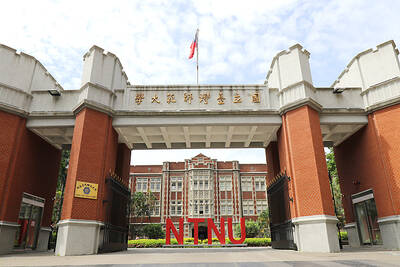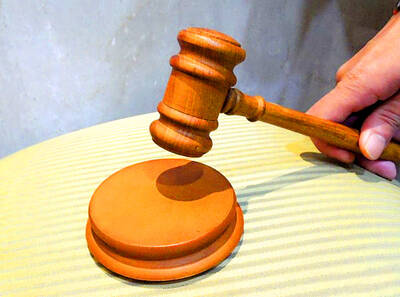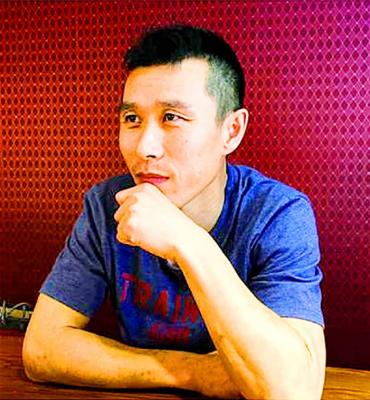Starting on Jan. 1, people could get relief from noise pollution resulting from construction work around their residence or office, as the Environmental Protection Administration (EPA) will begin to issue fines, the administration said yesterday.
“Starting next year, whether it is regular or low-frequency noise, as long as people feel that construction work may exceed levels stipulated in regulations, they can call 080-0066666 and request EPA inspection at the source,” the administration’s Director-General of Air Quality Protection and Noise Control Yang Ching-shi (楊慶熙) said.
The EPA receives about 40,000 complaints of noise pollution every year, Yang said. In the past year, 27 percent of noise complaints concerned noise coming from construction work, he said, adding that the greatest irritant could be low-frequency noise.
“Because low-frequency noise has a longer wavelength, it can go through walls and into buildings. In construction, low-frequency noise mostly comes from motors or generators. To control it, the source needs to be regulated and turned down,” Yang said.
He said low-frequency noise is also prevalent in other forms of noise pollution.
“Among the 15,160 inspections made by the EPA since 2005 at entertainment establishments and factories, 4 percent failed to comply with regular noise regulations while 12.7 percent failed to abide by low-frequency noise regulations,” he said.
The administration set low-frequency noise limits to between 20Hz to 200Hz, Yang said.
Offenders will face fines of between NT$18,000 and NT$180,000, and could be forced to cease construction work, he said.

CHANGING LANDSCAPE: Many of the part-time programs for educators were no longer needed, as many teachers obtain a graduate degree before joining the workforce, experts said Taiwanese universities this year canceled 86 programs, Ministry of Education data showed, with educators attributing the closures to the nation’s low birthrate as well as shifting trends. Fifty-three of the shuttered programs were part-time postgraduate degree programs, about 62 percent of the total, the most in the past five years, the data showed. National Taiwan Normal University (NTNU) discontinued the most part-time master’s programs, at 16: chemistry, life science, earth science, physics, fine arts, music, special education, health promotion and health education, educational psychology and counseling, education, design, Chinese as a second language, library and information sciences, mechatronics engineering, history, physical education

The High Prosecutors’ Office yesterday withdrew an appeal against the acquittal of a former bank manager 22 years after his death, marking Taiwan’s first instance of prosecutors rendering posthumous justice to a wrongfully convicted defendant. Chu Ching-en (諸慶恩) — formerly a manager at the Taipei branch of BNP Paribas — was in 1999 accused by Weng Mao-chung (翁茂鍾), then-president of Chia Her Industrial Co, of forging a request for a fixed deposit of US$10 million by I-Hwa Industrial Co, a subsidiary of Chia Her, which was used as collateral. Chu was ruled not guilty in the first trial, but was found guilty

DEADLOCK: As the commission is unable to forum a quorum to review license renewal applications, the channel operators are not at fault and can air past their license date The National Communications Commission (NCC) yesterday said that the Public Television Service (PTS) and 36 other television and radio broadcasters could continue airing, despite the commission’s inability to meet a quorum to review their license renewal applications. The licenses of PTS and the other channels are set to expire between this month and June. The National Communications Commission Organization Act (國家通訊傳播委員會組織法) stipulates that the commission must meet the mandated quorum of four to hold a valid meeting. The seven-member commission currently has only three commissioners. “We have informed the channel operators of the progress we have made in reviewing their license renewal applications, and

Taiwan-based publisher Li Yanhe (李延賀) has been sentenced to three years in prison, fined 50,000 yuan (US$6,890) in personal assets and deprived political rights for one year for “inciting secession” in China, China's Taiwan Affairs Office spokesman Chen Binhua (陳斌華) said today. The Shanghai First Intermediate People’s Court announced the verdict on Feb. 17, Chen said. The trial was conducted lawfully, and in an open and fair manner, he said, adding that the verdict has since come into legal effect. The defendant reportedly admitted guilt and would appeal within the statutory appeal period, he said, adding that the defendant and his family have